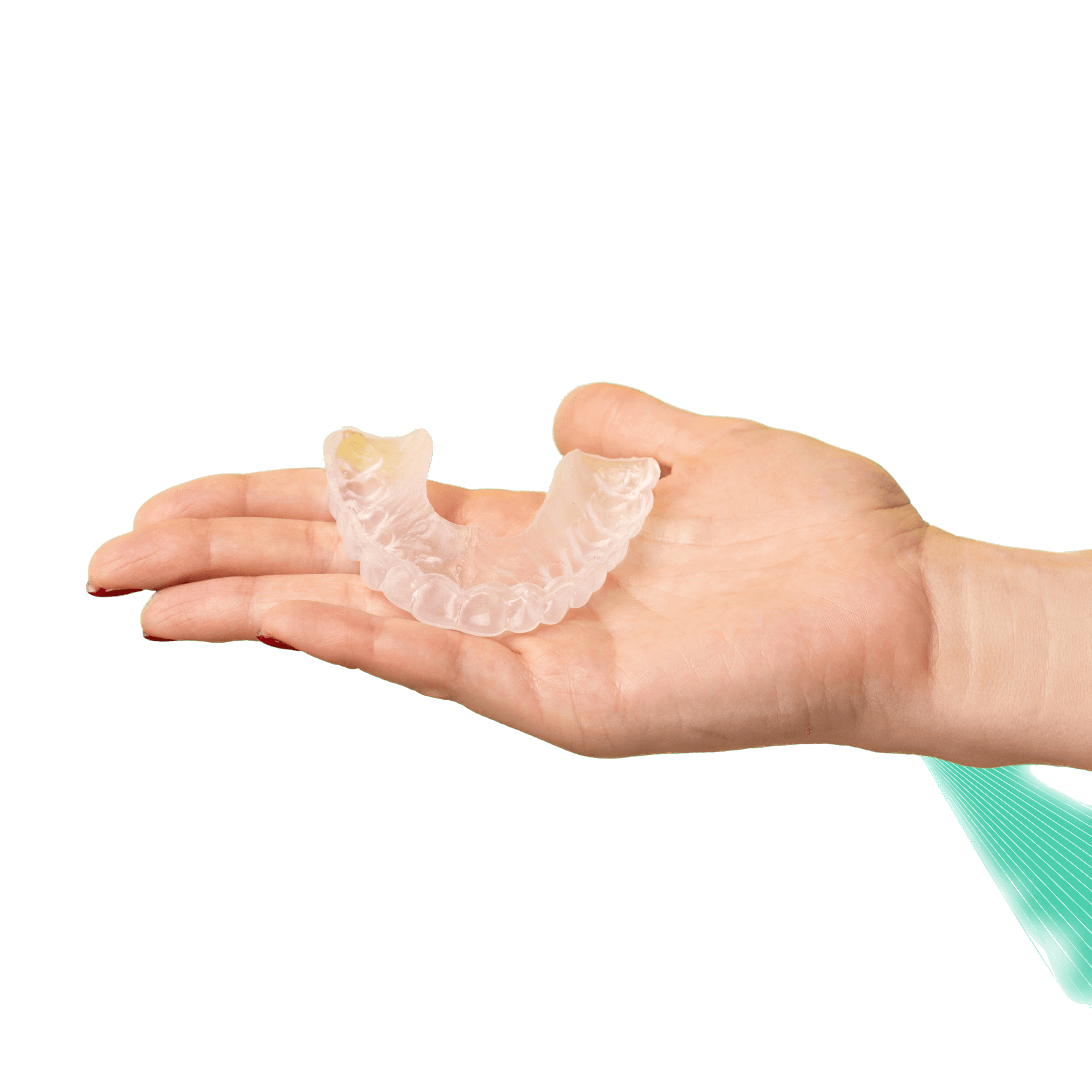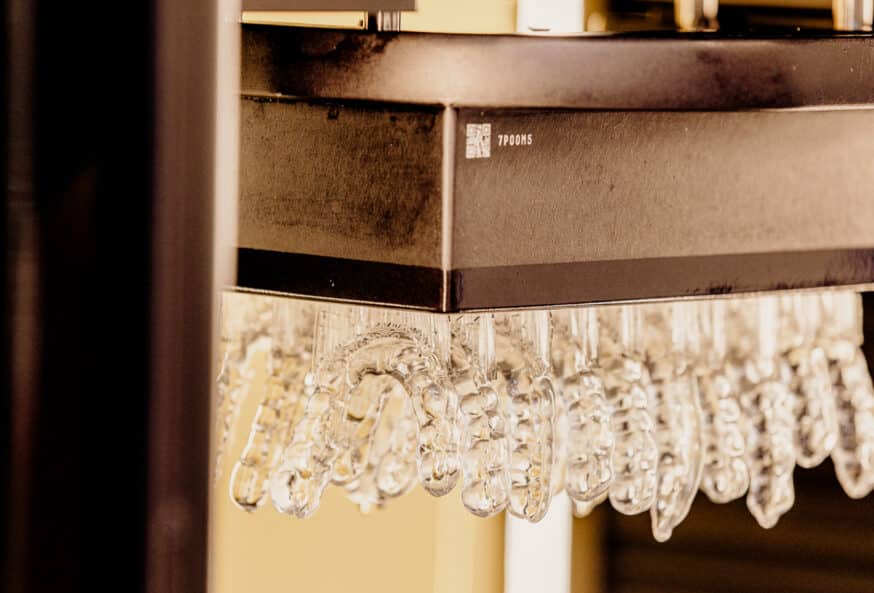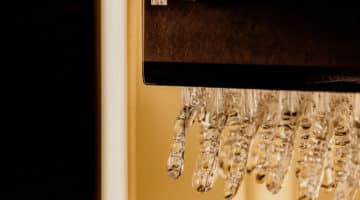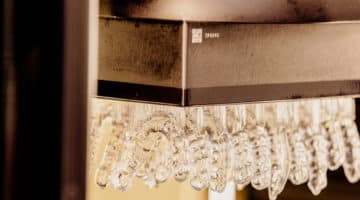Sleep bruxism—the grinding, clenching, and gnashing of one’s teeth at night—likely affects between 5% and 8% of the population. And temporomandibular joint disorder (TMJD)—pain and inflammation in the jaw joints—is estimated to affect 5–12% of people.
What do these conditions have in common (besides being fairly common)? For both, night guards can make a difference. When you keep your patients from teeth grinding or clenching their jaw, you help protect their enamel in the long term and avoid any unnecessary muscle tension.
Whether you call them dental guards, bite splints, or night guards, there are several kinds to choose from—and there’s more than one way to make them, too. In this guide to nighttime mouth guards, we’re exploring the different types of night guards, types of occlusal splints, and the processes—both digital and traditional—involved in producing them.
Dandy offers dental practices a free intraoral scanner.
Types of occlusal splints
An occlusal splint is a specialized piece of acrylic or plastic made to fit over the patient’s teeth. Occlusal splints treat a wide variety of TMDs such as bruxism, headaches, postural imbalances related to TMDs, and decreased vertical dimension of occlusion (VDO). There are various types of occlusal splints designed to treat various conditions.
Permissive splints
Permissive splints modify the occlusion so the teeth no longer impede the seating of the mandibular condyles. Permissive splints can:
- Achieve a balanced muscular function
- Control muscle activity
- Eliminate abnormal occlusal contact
- Eliminate the source and impact of muscle coordination issues
Directive splints (Non-permissive splints)
Directive splints, sometimes called non-permissive splints, are used to treat two types of conditions; painful disk displacements or severe trauma with retrodiscal effusion. Directive splints move the mandible forward to help relieve joint pain.
Pseudo-permissive splints
Pseudo-permissive splints are designed to separate maxillary teeth to achieve even, simultaneous contact with the opposing teeth. They are often used to treat patients with acute TMD, as they can usually be quickly fabricated.
5 different types of night guards
All occlusal splints act as a barrier between the top and bottom teeth, keeping patients from exacerbating their dental issues. However, there are multiple types of splints with varying purposes.
1. Hard night guards
Hard night guards are recommended for patients presenting with moderate to heavy teeth-grinding or clenching. Hard night guards are usually made of acrylic or tough plastic and are not as flexible as soft night guards.
2. Soft night guards
Soft night guards are recommended for patients presenting with light teeth-grinding or light to moderate clenching. Soft night guards are usually made from a 3mm thick, flexible, rubber-like material acting as a cushion. Soft night guard materials are more comfortable but aren’t as durable as hard night guard materials.
3. Dual-laminate night guards
Also known as hard/soft night guards, these best-of-both-worlds custom appliances have a soft, pliable inside and a firm outer layer. Dual-laminate night guards combine the comfort of a soft guard with the durability of a hard guard.
4. Flat plane occlusal guards
Flat plane occlusal night guards can be hard, soft, or hybrid. However, they differ from standard custom-fit night guards in that they have a flat occlusal plane.
So, while your average upper night guard accounts for the top teeth and the opposing bottom teeth, a flat plane occlusal guard only molds to the top teeth; the bottom teeth rest against a flat surface. These night guards work well for patients with disclusion or malocclusion (bad bite).
5. Astron night guards
Astron night guards are made with a unique patented design and durable materials. Prescribed to prevent teeth-grinding and clenching, Astron Night Guards are similar to hard night guards but are more flexible providing a comfortable fit for patients. Plus, Astron night guard users report no pain or tension after long-term wear.
Explore digital night guards
Digital workflows make adding a night guard to restorative cases as easy as one click. Add a night guard to your crown, implant or other restorative cases to help protect opposing dentition.

Comparing night guard production processes: traditional vs. digital
Aside from over-the-counter mouth guards, all high-quality night guards are manufactured by dental professionals. There are two ways to prepare and produce a night guard: Traditionally and digitally.
The traditional process
As with all dental appliances, night guard production starts with a consultation. Once you and your patient determine that a night guard is the solution, you’ll take a PVS impression of your patient’s lower and upper teeth.
Meanwhile, the impression is mailed to a dental lab for the production process to begin. The lab techs use the negative copies of the teeth to create a cast. From there, they’ll take your chosen night guard material—hard, soft, or hybrid—and form it around the cast to produce the night guard.
After any necessary adjustments, the finished night guard is shipped back to the dental office for pick up and final fitting (or, in some cases, directly to the patient).
The digital process
The rise of digital dentistry and new dental technology has made the digital process of producing nightguards more accessible. The steps are similar to the traditional method, but there are a few notable improvements.
Following the consultation, you’ll take an impression of your patient’s teeth. However, when it comes to digital impressions vs traditional impressions, instead of placing unwieldy trays into the patient’s mouth to create a physical impression, you’ll use an intraoral scanner to produce a digital impression. Once the impression-taking is complete, you’ll instantly send the scan to the dental lab.
Switching from a traditional impression to a digital one saves time in several different places:
- Chair time – Patients no longer have to sit with a mouth full of alginate for minutes at a time. Instead, most intraoral scans take under a minute.
- Wait time – There’s no need to wait for the impression to dry and harden—digital scans are ready the moment you finish scanning.
- Shipping time – Digital scans take seconds to reach the dental lab, whereas physical impressions may take a week or more to ship.
After the impression is made and sent to the lab, the process again takes a turn. Instead of making the night guard from a cast, the lab techs can simply use the digital scan as a model—once again cutting down on production time. Thanks to CAD/CAM dentistry technology, the lab team can make minute adjustments to ensure proper spacing and alignment for an impressively accurate fit.
Finally, once the night guard is finished, it’s sent back to your office (or to the patient) for any final adjustments and information sessions.
The benefits of 3D printing night guards
A better fit provides patient comfort and efficiency. While the 3D printing aspect is truly unique and one of a kind, it is the digital design process that elevates this night guard to the next level. The ability to digitally design your night guard will increase accuracy on multiple fronts, and in turn save you time with minimal adjustments needed.
Fit: The design software eliminates the risk of human error and utilizes the necessary parameters to provide a secure and comfortable night guard
Occlusion: With digital design, the lab is able to directly incorporate the bitescans to ensure occlusion is correct. With Printed Night Guards you can always be assured that occlusion and fit will never be an issue
Types of occlusal splints with Dandy
Overall, the occlusal guard 3D digital process offers a better experience for your patients and your staff. Impressions take less time, shipping costs are reduced, and the finished product is more precise providing a more comfortable fit for the patient.
f you’re ready to try digital dentistry, try Dandy. From 3D printed night guards to TMJ appliances, Dandy is your lab partner in digital dentistry and digital night guards. The faster your night guard appointments go, the sooner you can see your next patient—and the more likely your last client will tell their friends about their efficient, stress-free day at the dentist.
Ultimately, the faster your nightguard appointments go, the sooner you can see your next patient—and the more likely your last client will tell their friends about their efficient, stress-free day at the dentist.
Sources:
National Center for Biotechnology Information. Sleep Bruxism-Tooth Grinding Prevalence, Characteristics and Familial Aggregation: A Large Cross-Sectional Survey and Polysomnographic Validation. https://www.ncbi.nlm.nih.gov/pmc/articles/PMC5070759
National Institute of Dental and Craniofacial Research. Prevalence of TMJD and its Signs and Symptoms. https://www.nidcr.nih.gov/research/data-statistics/facial-pain/prevalence
My Community Dental Centers. Mouth Guards, Night Guards, and Bite Splints. https://www.mydental.org/dental-services/night-guards/
Dental Update. The bilaminar (Dual-Laminate) protective night guard. https://www.researchgate.net/publication/319040938_The_bilaminar_Dual-Laminate_protective_night_guard
Occlusal splints-types and effectiveness in temporomandibular disorder management https://www.ncbi.nlm.nih.gov/pmc/articles/PMC9931504/
Join thousands of dental professionals who get our emails ever week!
We send emails on Tuesdays. Keep an eye out for the next one!



